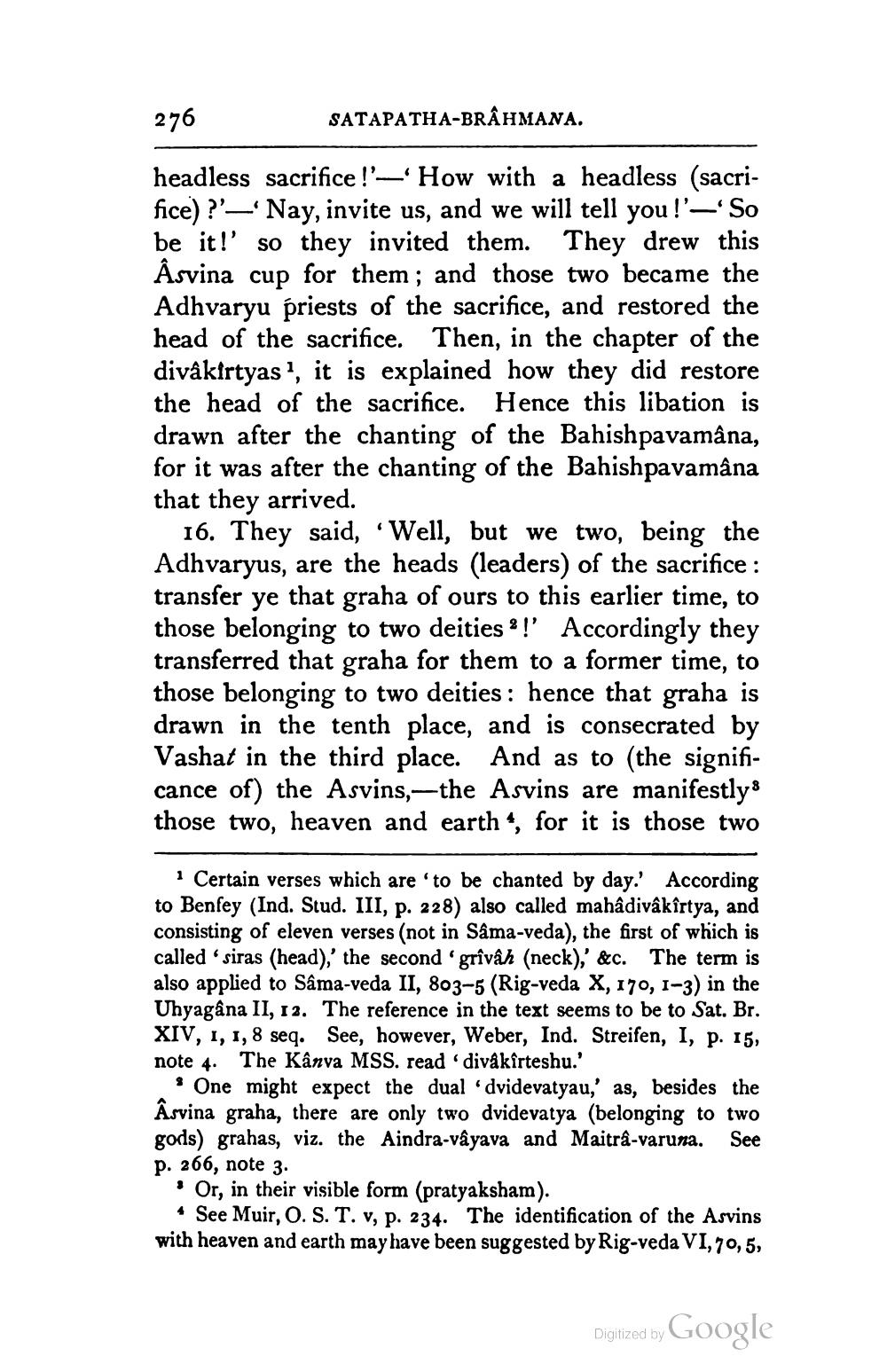________________
276
SATAPATHA-BRAHMANA.
headless sacrifice !'- How with a headless (sacrifice) ?'— Nay, invite us, and we will tell you !'~So be it!' so they invited them. They drew this Asvina cup for them; and those two became the Adhvaryu priests of the sacrifice, and restored the head of the sacrifice. Then, in the chapter of the divâkirtyas ", it is explained how they did restore the head of the sacrifice. Hence this libation is drawn after the chanting of the Bahishpavamâna, for it was after the chanting of the Bahishpavamâna that they arrived.
16. They said, “Well, but we two, being the Adhvaryus, are the heads (leaders) of the sacrifice : transfer ye that graha of ours to this earlier time, to those belonging to two deities ? !' Accordingly they transferred that graha for them to a former time, to those belonging to two deities: hence that graha is drawn in the tenth place, and is consecrated by Vashat in the third place. And as to the significance of) the Asvins,—the Asvins are manifestly8 those two, heaven and earth“, for it is those two
Certain verses which are to be chanted by day. According to Benfey (Ind. Stud. III, p. 228) also called mahâdivâkîrtya, and consisting of eleven verses (not in Sâma-veda), the first of which is called 'siras (head),' the second 'grîvâh (neck),' &c. The term is also applied to Sâma-veda II, 803-5 (Rig-veda X, 170, 1-3) in the Uhyagana II, 12. The reference in the text seems to be to Sat. Br. XIV, 1, 1, 8 seq. See, however, Weber, Ind. Streifen, I, p. 15, note 4. The Kanva MSS. read divakîrteshu.'
* One might expect the dual dvidevatyau,' as, besides the Asvina graha, there are only two dvidevatya (belonging to two gods) grahas, viz. the Aindra-vâyava and Maitra-varuna. See p. 266, note 3. • Or, in their visible form (pratyaksham).
See Muir, O. S. T. v, p. 234. The identification of the Asvins with heaven and earth may have been suggested by Rig-veda VI, 70,5,
Digitized by Google




